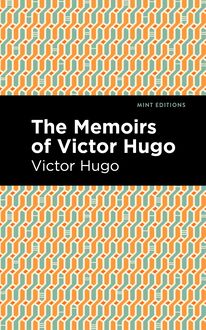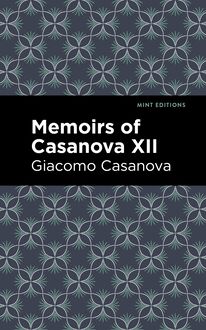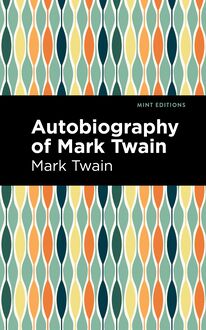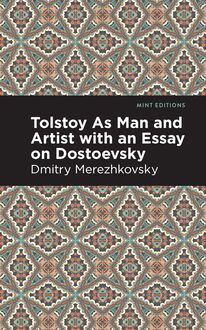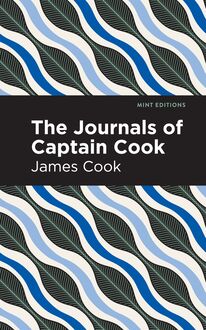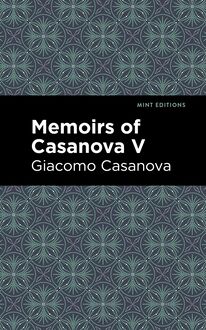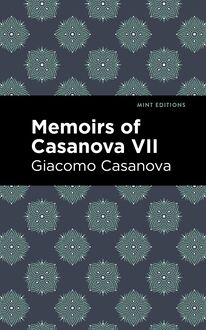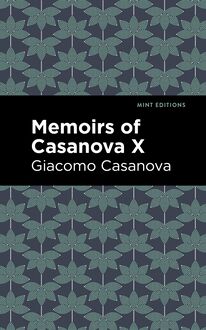-
 Univers
Univers
-
 Ebooks
Ebooks
-
 Livres audio
Livres audio
-
 Presse
Presse
-
 Podcasts
Podcasts
-
 BD
BD
-
 Documents
Documents
-
- Cours
- Révisions
- Ressources pédagogiques
- Sciences de l’éducation
- Manuels scolaires
- Langues
- Travaux de classe
- Annales de BEP
- Etudes supérieures
- Maternelle et primaire
- Fiches de lecture
- Orientation scolaire
- Méthodologie
- Corrigés de devoir
- Annales d’examens et concours
- Annales du bac
- Annales du brevet
- Rapports de stage
La lecture à portée de main
Vous pourrez modifier la taille du texte de cet ouvrage
Découvre YouScribe en t'inscrivant gratuitement
Je m'inscrisDécouvre YouScribe en t'inscrivant gratuitement
Je m'inscrisEn savoir plus
Vous pourrez modifier la taille du texte de cet ouvrage
En savoir plus

Description
The Education of Henry Adams follows the life of presidential descendent Henry Adams. However, instead of serving just as an account of Adams’ deeds, The Education of Henry Adams is a series of observations and introspections Adams makes on social changes, scientific advancements, personal relationships, professional success, travel, religion, war, and education.
Born into the privilege of wealth and the renowned success of his ancestors, President John Adams and President John Quincy Adams, Adams received an education from notable schools, such as Harvard. He continued his prestigious education in Berlin, studying law and the German language. Despite his formal education, Adams felt unprepared to face the changing dynamics of his country, including shifts in social, religious, political, and scientific beliefs. For this reason, Adams advocates for “self-education” through experience, friendships, and reading. In his autobiography, Adams endorses studying American history and science in school, and encourages the process of self-educating after one’s formal education. With a set of strong political and religious beliefs, Adams invokes a substantial impression with his perspectives on the on-going transformation of the United States of America.
Henry Adams’ autobiography, The Education of Henry Adams, has earned remarkable acclaim, including receiving a Pulitzer Prize. As a man who had direct access to many American political offices, including the presidential cabinet, the senate, and the congress, Adams had an intimate view of the innerworkings of American politics, and lived through social changes such as the Civil War, the abolition of slavery, scientific advancements, shifts in religious views, and the first World War. Though he felt his formal education left him unprepared for such happenings, Adams encourages readers to learn from their experiences and relationships. The Education of Henry Adams offers invaluable insight on the rapid changes in society, and reminds readers that one’s education is never finished.
Now with a new, eye-catching cover design and reprinted in a modern font, The Education of Henry Adams by Henry Adams is more accessible than ever and able to offer modern-day readers insight on historical events and philosophy of learning that will always be relevant.
Sujets
Informations
| Publié par | Mint Editions |
| Date de parution | 01 décembre 2020 |
| Nombre de lectures | 0 |
| EAN13 | 9781513272672 |
| Langue | English |
| Poids de l'ouvrage | 1 Mo |
Informations légales : prix de location à la page 0,0500€. Cette information est donnée uniquement à titre indicatif conformément à la législation en vigueur.
Extrait
The Education of Henry Adams
An Autobiography
Henry Adams
The Education of Henry Adams was first published in 1907.
This edition published by Mint Editions 2020.
ISBN 9781513267678 | E-ISBN 9781513272672
Published by Mint Editions®
minteditionbooks.com
Publishing Director: Jennifer Newens
Design & Production: Rachel Lopez Metzger
Typesetting: Westchester Publishing Services
C ONTENTS P REFACE I. Q UINCY (1838–1848) II. B OSTON (1848–1854) III. W ASHINGTON (1850–1854) IV. H ARVARD C OLLEGE (1854–1858) V. B ERLIN (1858–1859) VI. R OME (1859–1860) VII. T REASON (1860–1861) VIII. D IPLOMACY (1861) IX. F OES OR F RIENDS (1862) X. P OLITICAL M ORALITY (1862) XI. T HE B ATTLE OF THE R AMS (1863) XII. E CCENTRICITY (1863) XIII. T HE P ERFECTION OF H UMAN S OCIETY (1864) XIV. D ILETTANTISM (1865–1866) XV. D ARWINISM (1867–1868) XVI. T HE P RESS (1868) XVII. P RESIDENT G RANT (1869) XVIII. F REE F IGHT (1869–1870) XIX. C HAOS (1870) XX. F AILURE (1871) XXI. T WENTY Y EARS A FTER (1892) XXII. C HICAGO (1893) XXIII. S ILENCE (1894–1898) XXIV. I NDIAN S UMMER (1898–1899) XXV. T HE D YNAMO AND T HE V IRGIN (1900) XXVI. T WILIGHT (1901) XXVII. T EUFELSDROCKH (1901) XXVIII. T HE H EIGHT OF K NOWLEDGE (1902) XXIX. T HE A BYSS OF I GNORANCE (1902) XXX. V IS I NERTIAE (1903) XXXI. T HE G RAMMAR OF S CIENCE (1903) XXXII. V IS N OVA (1903–1904) XXXIII. A D YNAMIC T HEORY OF H ISTORY (1904) XXXIV. A L AW OF A CCELERATION (1904) XXXV. N UNC A GE (1905)
P REFACE
Jean Jacques Rousseau began his famous Confessions by a vehement appeal to the Deity: “I have shown myself as I was; contemptible and vile when I was so; good, generous, sublime when I was so; I have unveiled my interior such as Thou thyself hast seen it, Eternal Father! Collect about me the innumerable swarm of my fellows; let them hear my confessions; let them groan at my unworthiness; let them blush at my meannesses! Let each of them discover his heart in his turn at the foot of thy throne with the same sincerity; and then let any one of them tell thee if he dares: ‘I was a better man!’ ”
Jean Jacques was a very great educator in the manner of the eighteenth century, and has been commonly thought to have had more influence than any other teacher of his time; but his peculiar method of improving human nature has not been universally admired. Most educators of the nineteenth century have declined to show themselves before their scholars as objects more vile or contemptible than necessary, and even the humblest teacher hides, if possible, the faults with which nature has generously embellished us all, as it did Jean Jacques, thinking, as most religious minds are apt to do, that the Eternal Father himself may not feel unmixed pleasure at our thrusting under his eyes chiefly the least agreeable details of his creation.
As an unfortunate result the twentieth century finds few recent guides to avoid, or to follow. American literature offers scarcely one working model for high education. The student must go back, beyond Jean Jacques, to Benjamin Franklin, to find a model even of self-teaching. Except in the abandoned sphere of the dead languages, no one has discussed what part of education has, in his personal experience, turned out to be useful, and what not. This volume attempts to discuss it.
As educator, Jean Jacques was, in one respect, easily first; he erected a monument of warning against the Ego. Since his time, and largely thanks to him, the Ego has steadily tended to efface itself, and, for purposes of model, to become a manikin on which the toilet of education is to be draped in order to show the fit or misfit of the clothes. The object of study is the garment, not the figure. The tailor adapts the manikin as well as the clothes to his patron’s wants. The tailor’s object, in this volume, is to fit young men, in universities or elsewhere, to be men of the world, equipped for any emergency; and the garment offered to them is meant to show the faults of the patchwork fitted on their fathers.
At the utmost, the active-minded young man should ask of his teacher only mastery of his tools. The young man himself, the subject of education, is a certain form of energy; the object to be gained is economy of his force; the training is partly the clearing away of obstacles, partly the direct application of effort. Once acquired, the tools and models may be thrown away.
The manikin, therefore, has the same value as any other geometrical figure of three or more dimensions, which is used for the study of relation. For that purpose it cannot be spared; it is the only measure of motion, of proportion, of human condition; it must have the air of reality; must be taken for real; must be treated as though it had life. Who knows? Possibly it had!
February 16, 1907
Chapter I
Q UINCY (1838–1848)
Under the shadow of Boston State House, turning its back on the house of John Hancock, the little passage called Hancock Avenue runs, or ran, from Beacon Street, skirting the State House grounds, to Mount Vernon Street, on the summit of Beacon Hill; and there, in the third house below Mount Vernon Place, February 16, 1838, a child was born, and christened later by his uncle, the minister of the First Church after the tenets of Boston Unitarianism, as Henry Brooks Adams.
Had he been born in Jerusalem under the shadow of the Temple and circumcised in the Synagogue by his uncle the high priest, under the name of Israel Cohen, he would scarcely have been more distinctly branded, and not much more heavily handicapped in the races of the coming century, in running for such stakes as the century was to offer; but, on the other hand, the ordinary traveller, who does not enter the field of racing, finds advantage in being, so to speak, ticketed through life, with the safeguards of an old, established traffic. Safeguards are often irksome, but sometimes convenient, and if one needs them at all, one is apt to need them badly. A hundred years earlier, such safeguards as his would have secured any young man’s success; and although in 1838 their value was not very great compared with what they would have had in 1738, yet the mere accident of starting a twentieth-century career from a nest of associations so colonial,—so troglodytic—as the First Church, the Boston State House, Beacon Hill, John Hancock and John Adams, Mount Vernon Street and Quincy, all crowding on ten pounds of unconscious babyhood, was so queer as to offer a subject of curious speculation to the baby long after he had witnessed the solution. What could become of such a child of the seventeenth and eighteenth centuries, when he should wake up to find himself required to play the game of the twentieth? Had he been consulted, would he have cared to play the game at all, holding such cards as he held, and suspecting that the game was to be one of which neither he nor any one else back to the beginning of time knew the rules or the risks or the stakes? He was not consulted and was not responsible, but had he been taken into the confidence of his parents, he would certainly have told them to change nothing as far as concerned him. He would have been astounded by his own luck. Probably no child, born in the year, held better cards than he. Whether life was an honest game of chance, or whether the cards were marked and forced, he could not refuse to play his excellent hand. He could never make the usual plea of irresponsibility. He accepted the situation as though he had been a party to it, and under the same circumstances would do it again, the more readily for knowing the exact values. To his life as a whole he was a consenting, contracting party and partner from the moment he was born to the moment he died. Only with that understanding—as a consciously assenting member in full partnership with the society of his age—had his education an interest to himself or to others.
As it happened, he never got to the point of playing the game at all; he lost himself in the study of it, watching the errors of the players; but this is the only interest in the story, which otherwise has no moral and little incident. A story of education—seventy years of it—the practical value remains to the end in doubt, like other values about which men have disputed since the birth of Cain and Abel; but the practical value of the universe has never been stated in dollars. Although every one cannot be a Gargantua-Napoleon-Bismarck and walk off with the great bells of Notre Dame, every one must bear his own universe, and most persons are moderately interested in learning how their neighbors have managed to carry theirs.
This problem of education, started in 1838, went on for three years, while the baby grew, like other babies, unconsciously, as a vegetable, the outside world working as it never had worked before, to get his new universe ready for him. Often in old age he puzzled over the question whether, on the doctrine of chances, he was at liberty to accept himself or his world as an accident. No such accident had ever happened before in human experience. For him, alone, the old universe was thrown into the ash-heap and a new one created. He and his eighteenth-century, troglodytic Boston were suddenly cut apart—separated forever—in act if not in sentiment, by the opening of the Boston and Albany Railroad; the appearance of the first Cunard steamers in the bay; and the telegraphic messages which carried from Baltimore to Washington the news that Henry Clay and James K. Polk were nominated for the Presidency. This was in May, 1844; he was six years old; his new world was ready for use, and only fragments of the old met his eyes.
Of all this that was being done to complicate his education, he knew only the color of yellow. He first found himself sitting on a yellow kitchen floor in strong sunlight. He was three years old when he took this earliest step in education; a lesson of color. The second followed soon; a lesson of taste.
-
 Univers
Univers
-
 Ebooks
Ebooks
-
 Livres audio
Livres audio
-
 Presse
Presse
-
 Podcasts
Podcasts
-
 BD
BD
-
 Documents
Documents
-
Jeunesse
-
Littérature
-
Ressources professionnelles
-
Santé et bien-être
-
Savoirs
-
Education
-
Loisirs et hobbies
-
Art, musique et cinéma
-
Actualité et débat de société
-
Jeunesse
-
Littérature
-
Ressources professionnelles
-
Santé et bien-être
-
Savoirs
-
Education
-
Loisirs et hobbies
-
Art, musique et cinéma
-
Actualité et débat de société
-
Actualités
-
Lifestyle
-
Presse jeunesse
-
Presse professionnelle
-
Pratique
-
Presse sportive
-
Presse internationale
-
Culture & Médias
-
Action et Aventures
-
Science-fiction et Fantasy
-
Société
-
Jeunesse
-
Littérature
-
Ressources professionnelles
-
Santé et bien-être
-
Savoirs
-
Education
-
Loisirs et hobbies
-
Art, musique et cinéma
-
Actualité et débat de société
- Cours
- Révisions
- Ressources pédagogiques
- Sciences de l’éducation
- Manuels scolaires
- Langues
- Travaux de classe
- Annales de BEP
- Etudes supérieures
- Maternelle et primaire
- Fiches de lecture
- Orientation scolaire
- Méthodologie
- Corrigés de devoir
- Annales d’examens et concours
- Annales du bac
- Annales du brevet
- Rapports de stage
